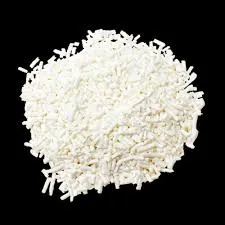
Understanding the Roles of Direct and Indirect Food Additives in Food Safety
Understanding Direct and Indirect Food Additives
Food additives play a significant role in the food industry, enhancing flavors, preserving freshness, and improving the overall quality of food products. They can be categorized into two main types direct food additives and indirect food additives. Understanding these types helps consumers make informed choices about what they eat.
What Are Direct Food Additives?
Direct food additives are substances that are intentionally added to food for a specific purpose. These additives serve various functions such as preserving food, enhancing flavor, improving texture, and maintaining nutritional quality. Some common examples of direct food additives include
1. Preservatives Substances like sodium benzoate and potassium sorbate are used to prevent spoilage and extend the shelf life of food products. They inhibit the growth of bacteria, yeast, and molds.
2. Flavor Enhancers Monosodium glutamate (MSG) is a well-known flavor enhancer that makes food taste more savory. Other flavor additives include natural extracts, spices, and artificial flavorings that provide distinct tastes.
3. Coloring Agents Food dyes, both natural (like beet juice) and synthetic (like Red 40), are added to enhance the visual appeal of food, making it more attractive to consumers.
4. Emulsifiers These additives, such as lecithin and mono- and diglycerides, help blend ingredients that usually do not mix well, such as oil and water. This is particularly important in products like salad dressings and sauces.
5. Thickeners and Stabilizers Ingredients like xanthan gum and guar gum are used to improve the texture of food products, providing a desirable consistency in items like ice cream and yogurt.
It's essential for food manufacturers to use direct additives judiciously, ensuring they comply with safety regulations established by health authorities. In many countries, these additives are assigned Generally Recognized as Safe (GRAS) status if they meet certain safety benchmarks.
direct and indirect food additives

What Are Indirect Food Additives?
Indirect food additives, on the other hand, are not intentionally added to food but may still be present as a result of their packaging, processing, or contamination. These additives can inadvertently enter the food supply and pose potential health risks. Examples of indirect food additives include
1. Chemical Residues Pesticides and herbicides used in agriculture can leave residues on fruits and vegetables. While the allowable limits for these chemicals are regulated, their presence raises concerns among consumers.
2. Packaging Materials Substances like bisphenol A (BPA), found in some plastics, may leach into food from containers, especially when exposed to heat. This has prompted many consumers to seek BPA-free products.
3. Processing Aids These can include solvents and additives used during food processing that may inadvertently remain in the final product. For instance, the use of ammonium compounds in certain meat processing methods can lead to residual compounds in the final product.
4. Environmental Contaminants Heavy metals and polychlorinated biphenyls (PCBs) can contaminate food through environmental sources. Such contaminants can enter the food supply chain through soil and water polluted by industrial activities.
Regulatory Oversight and Consumer Awareness
While the presence of food additives, both direct and indirect, is regulated by food safety authorities globally, consumer awareness and education are crucial. Labels typically indicate the presence of direct additives, allowing consumers to make informed choices. Indirect additives, however, can be more challenging to identify since they may not be listed on packaging.
As consumers become increasingly health-conscious, there is a growing demand for transparency in the food supply chain. Many opt for organic products, which are less likely to contain synthetic additives, and seek knowledge about food sourcing and processing methods.
In conclusion, both direct and indirect food additives play an integral role in the food industry. While direct additives are deliberately used for specific functions, indirect additives highlight the complexities of food production and packaging. As knowledge about these additives grows, consumers can make better choices for their health and well-being. Awareness and regulation will continue to evolve, driving the industry toward safer and more transparent practices.
-
Sodium Dichloroisocyanurate Safety Handling ProtocolsNewsJul.29,2025
-
Mining Chemicals for Copper Extraction Processes GuideNewsJul.29,2025
-
Fertilizer for Sale Shipping and Storage TipsNewsJul.29,2025
-
Dimethyl Disulfide as Sulfurizing AgentNewsJul.29,2025
-
Benzotriazole Safety Data Handling and Storage GuidelinesNewsJul.29,2025
-
Ammonium Bicarbonate Safety Handling Storage GuidelinesNewsJul.29,2025
-
The Transformative Role Of Trichloroisocyanuric Acid in Water TreatmentNewsJul.23,2025
Hebei Tenger Chemical Technology Co., Ltd. focuses on the chemical industry and is committed to the export service of chemical raw materials.
-

view more DiethanolisopropanolamineIn the ever-growing field of chemical solutions, diethanolisopropanolamine (DEIPA) stands out as a versatile and important compound. Due to its unique chemical structure and properties, DEIPA is of interest to various industries including construction, personal care, and agriculture. -

view more TriisopropanolamineTriisopropanolamine (TIPA) alkanol amine substance, is a kind of alcohol amine compound with amino and alcohol hydroxyl, and because of its molecules contains both amino and hydroxyl. -

view more Tetramethyl Thiuram DisulfideTetramethyl thiuram disulfide, also known as TMTD, is a white to light-yellow powder with a distinct sulfur-like odor. It is soluble in organic solvents such as benzene, acetone, and ethyl acetate, making it highly versatile for use in different formulations. TMTD is known for its excellent vulcanization acceleration properties, which makes it a key ingredient in the production of rubber products. Additionally, it acts as an effective fungicide and bactericide, making it valuable in agricultural applications. Its high purity and stability ensure consistent performance, making it a preferred choice for manufacturers across various industries.











